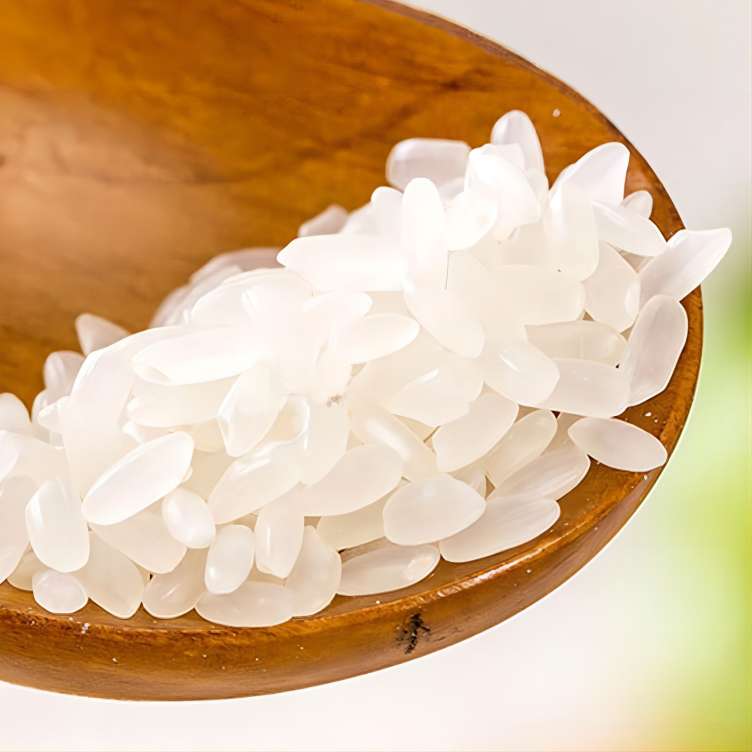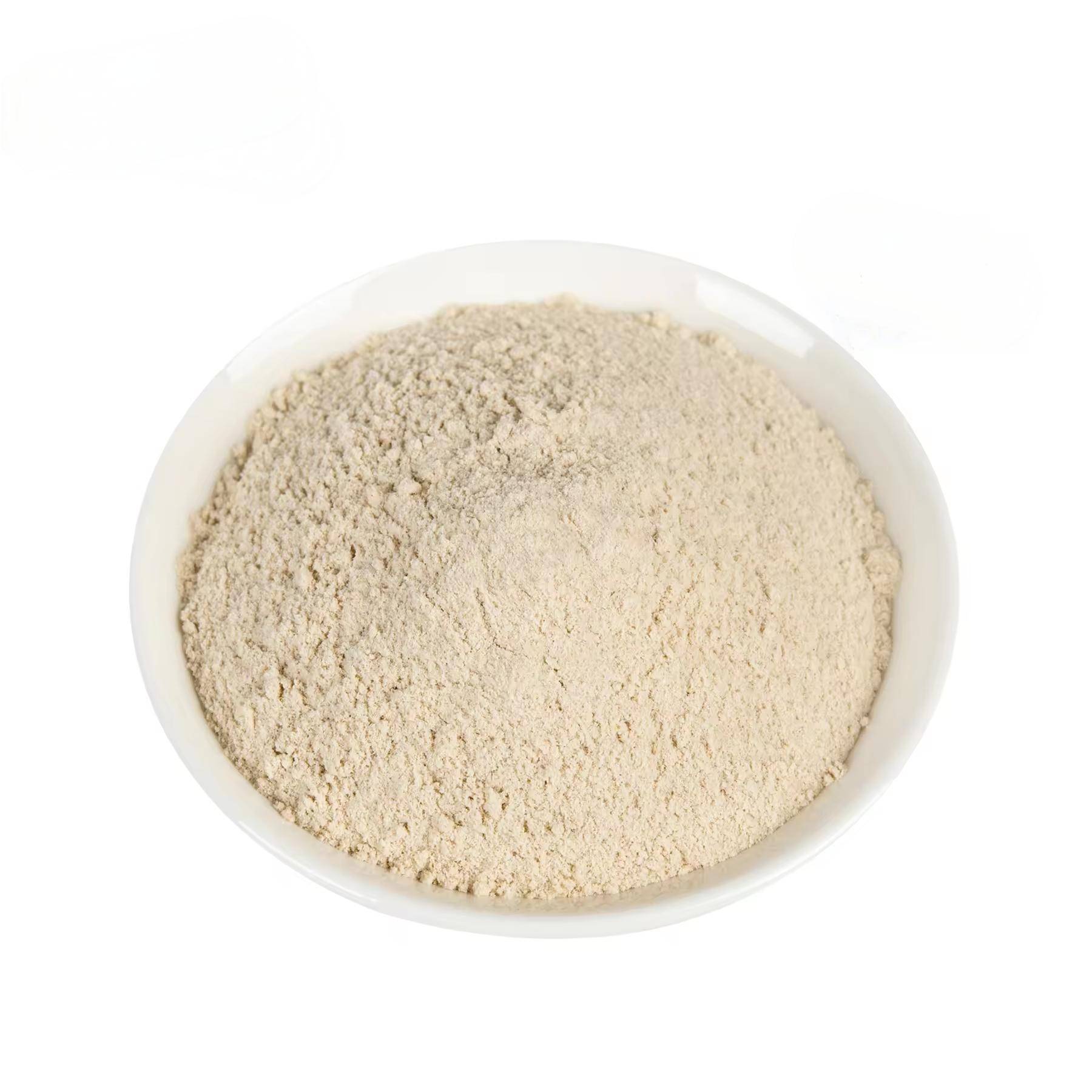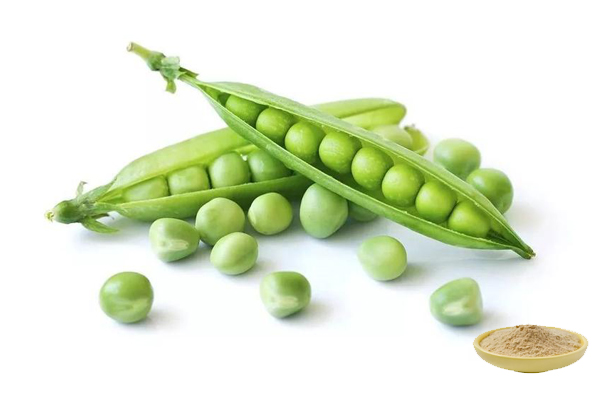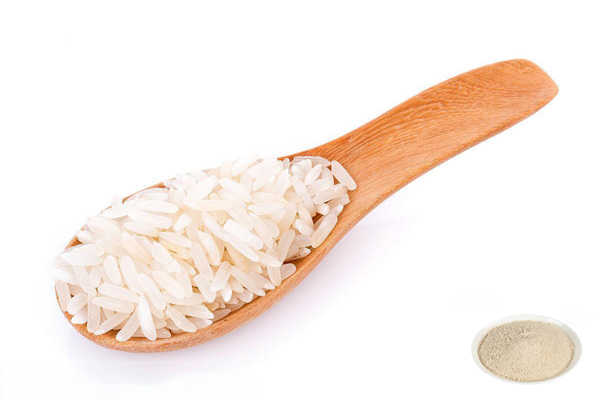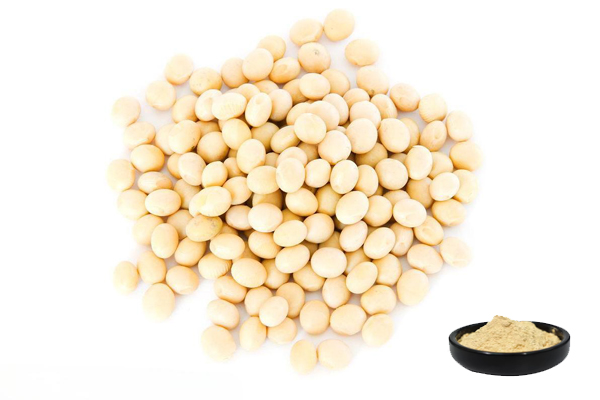Rice Protein Powder(90% Protein)
Source:Rice
Active Ingredients:Rice Protein
Assay:70%,80%, 90%
Testing Method:Kjeldahl Determination
Appearance:Fine Off-White Powder
Pesticide Residue:Comply with (EC) No 396/2005 Standard
- Description
- Data Sheet
- Certificate
-
What is Rice Protein Powder?
Rice protein is made from non-genetically modified (non-GMO) rice, separated from starch, hydrolyzed and refined, with a maximum protein content of more than 90%. With a reasonable ratio of 18 amino acids, highlights contain 18 amino acids, which is in line with the nutritional pattern recommended by the FAO/WHO (Food and Agriculture Organisation of the United Nations and the World Health Organisation).
As a nutritionally sound protein, rice protein has a protein efficacy ratio (PER) close to that of casein, a reasonable amino acid composition, and a higher lysine content than other cereal crops. As a class of hypoallergenic proteins, free of anti-nutritional factors and easily digestible, it is recognized as a high quality dietary protein and a more ideal plant protein feed. Rice protein powder has high nutritional value, non-allergenic, has zero cholesterol, has no hormones, high digestibility, etc. It is widely used in the field of sports nutrition, specialty medical products, and nutraceuticals.
Green Spring Technology supplies Rice Protein Powder (90% Protein), which is made from high-quality non-GMO rice, which is hormone-free, solvent-free, low purine, and high BCAA.
Founded in 2000, Green Spring Technology is a leading biotechnology company in China. Green Spring strictly implements a quality management system and organises production by ISO, HACCP and other quality standards. Our products are manufactured following the highest international industry standards, such as EU EC396, EU 2023/915 and the highest solvent residue standards. Green Spring has obtained Halal, Kosher, COSMOS, BRC, IFS, FDA, ISO and many other certifications. Authoritative third party test reports are available.
Specification:
Product Name
Rice Protein Powder
Latin Name
Oryza Sativa
Source
Rice Seed
Active Ingredients
Rice Protein
Specification
70%,80%,90%
Testing Method
Kjeldahl Determination
Appearance
Faint Yellow Powder
Pesticide Residue
Comply with (EC) No 396/2005 Standard
Regulation:
It conforms to EU regulations.
Looking for a Quotation?Benefits:
Antihypertensive
Rice isolate protein (RPI) has been found to increase the levels of messenger ribonucleic acids (mRNAs), which are responsible for the synthesis of two important proteins in the kidneys, CYP2C11 and CYP2C23, which are important in the metabolism of the fatty acids arachidonic acid and 20-HETE (hydroxyeicosatetraenoic acid), which is important in the regulation of blood pressure is important.
Prevention of Chronic Diseases
It has been found that rice isolate protein has an inhibitory effect on atherosclerosis in the hereditary high cholesterol mouse model, which can reduce the destructive effect of atherosclerosis on arteries, and, at the same time, reduce the incidence of heart disease.
Balanced Amino Acid Composition
Rice protein has a high absorption and utilisation efficiency in the animal body, with a biological efficiency of up to 77, and its nutritional value is much higher than that of maize, wheat and other plant proteins. The amino acid composition of rice protein is balanced, rich in all kinds of essential amino acids required by the organism, which is close to the ideal model recommended by WHO/FAO (1973), with high lysine content and more than 80% of alkaline soluble gluten.
Applications:
In the Food Field:
As a recognized hypoallergenic food, rice protein was also the first raw material to appear in baby food. The use of rice protein as a formula substitute for children with cow's milk allergy has also been shown to be feasible. While hydrolysed cow's milk, soya protein, or other formulas are equally effective in avoiding cow's milk allergic reactions, cow's milk-allergic infants are more tolerant to formulas containing rice protein. As a nutritional supplement, rice protein can be used as a substitute for casein, whey and soya proteins in sports nutrition.
For Healthcare Products:
Active peptides with different functions can be isolated from the enzymatic hydrolysis products of rice proteins, which have antioxidant, immune-regulating or sleep-disorder-improving effects; meanwhile, due to their high solubility, they can also be widely used in nutraceuticals and solid beverages. In addition, moderately hydrolysed flavour peptides can be used in flavourings because of the special flavour imparted by the amino acids exposed by enzymatic degradation.
For Feed Product:
Rice protein powder is an excellent feed raw material with high protein content, fast energy conversion, high digestibility, good palatability, good disease resistance, low antigenicity and amino acid balance. Adding the concentrate of rice gluten in aquatic feed can not only improve the digestive performance of fish, but also control its excretion, to keep the water quality clarified and control water pollution. Enzymatic digestion of rice protein can produce flavour peptide instead of monosodium glutamate (MSG), which can effectively mask the bitter taste, enhance the viscosity and improve the palatability of feed, and chelate trace elements and minerals, which can increase the feed intake of the animals and at the same time ensure the safety and harmlessness.
-
Download
Rice Protein Powder(90% Protein) COA


 English
English French
French Spanish
Spanish Russian
Russian Korean
Korean Japanese
Japanese



